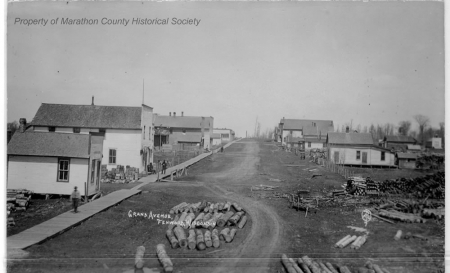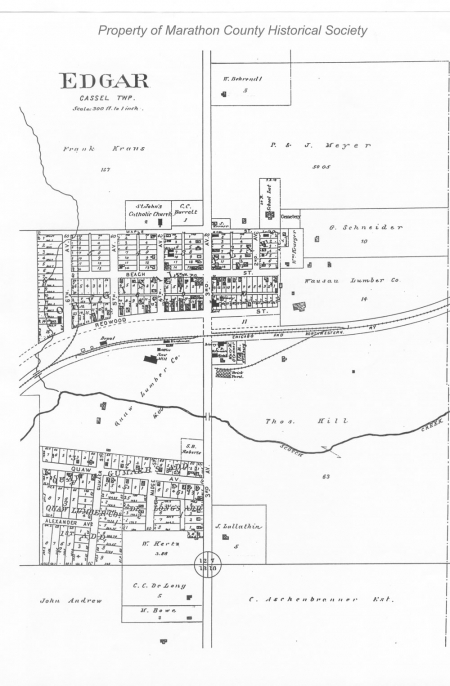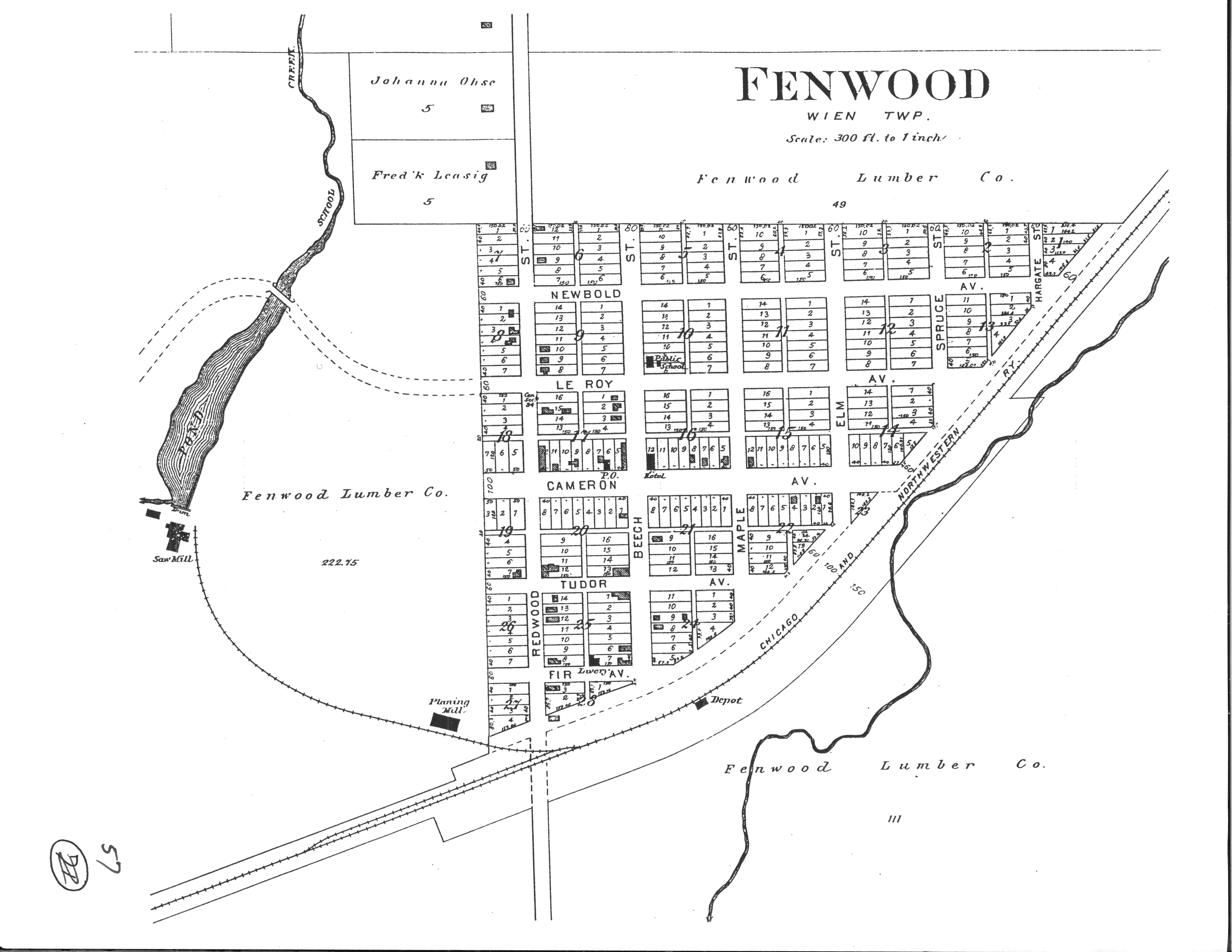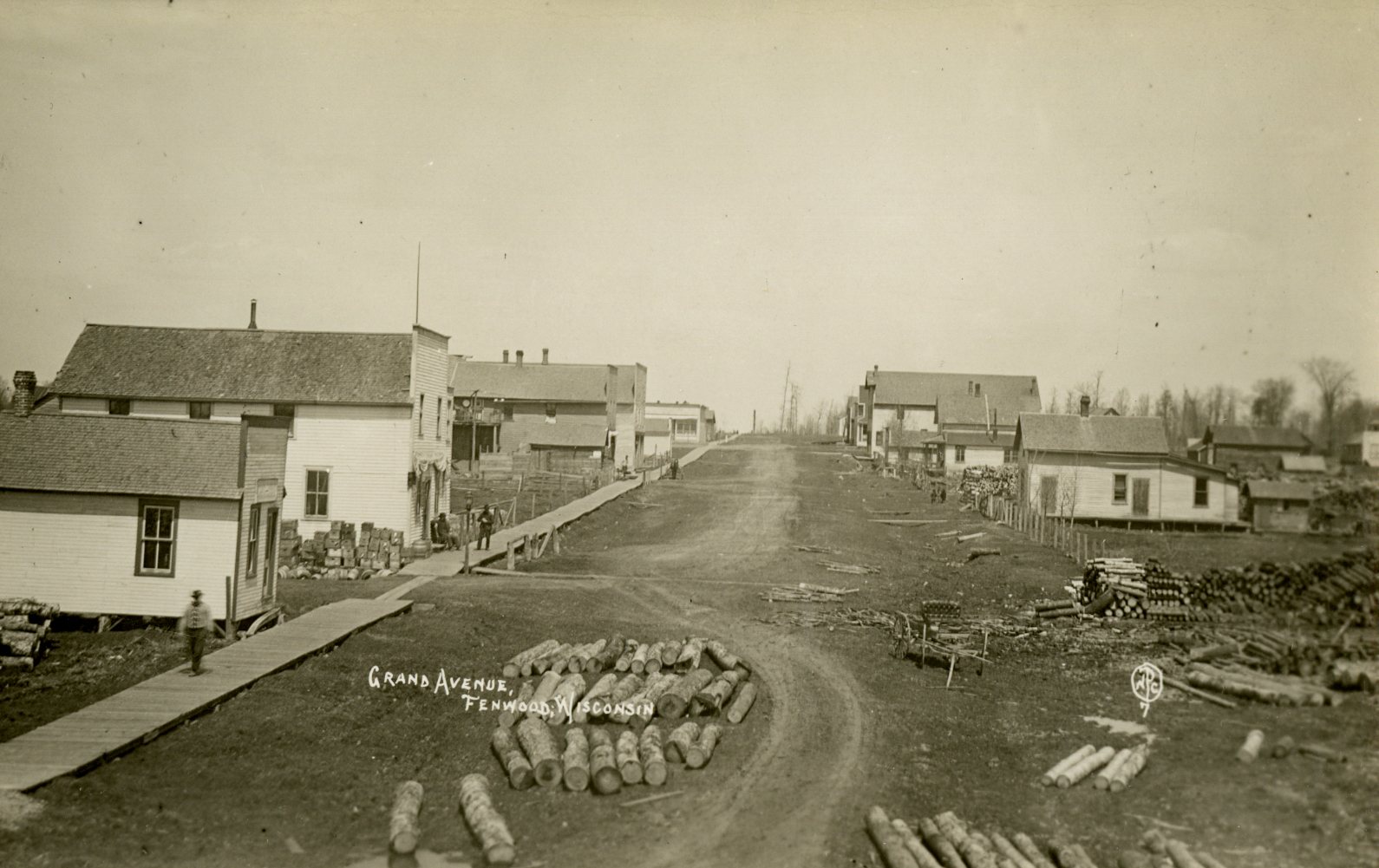Search our Places Database
Fenwood, Village of
Return To List of Locations | Back to Search
For more information on this location, please contact our research library.

Author:
Mary Moltzan
Location:
T. 28 N. - R. 4 E., Sec. 34, Township of Wien
Formallized:
April 16, 1904.
Background:
Population: 1905 -198, 2000 -174.
Fenwood's name comes from the word "Fen", which means a low land covered wholly or partly by water. Fenwood was such a place in early days. Fenwood was first recorded in the name of H. Ammidown in 1851. It was then acquired by Marathon County and the State of Wisconsin. Marathon County transferred to the Wisconsin Valley Railroad Company the necessary right of way and thousands of other acres including the heavily timbered section of the Fenwood area. C. S. Curtis of Wausau acquired other land in the area. Curtis erected a sawmill immediately west of the village limits. When the sawmill closed in 1910, many of the workers settled with their families on farms nearby. The Fenwood Stock Market was established at this time.
By then, dairy farming was the mainstay of the area's economy and a large cheese factory was built in the community.
First Public Official:
Gustave Miller
Post Office Established:
February 19, 1892
First Postmaster:
Henry Radant
About The Post Office:
Service was discontinued on November 30, 1984. The P. O. was located in Section 34 of Wien Township.
Railroad:
See background
This town had its beginnings with the Milwaukee Lakeshore and Western Railway. The railway entered the township in Section 33 and continued northeast through Fenwood. The depot was constructed ca. 1890 - 1891. In 1893, the railway line was sold to the Chicago and Northwestern Railway Company.
Churches:
Two German Evangelical Lutheran congregations:
1. St. Peter Lutheran Church created in September 1909.
2. St. Paul Lutheran Church created in 1910 and lasting for 42 years.
Schools:
A two department school
Industry:
The Fenwood Stock Market consisted of about 300 acres and provided experimentation along agricultural lines and promoted dairying and other branches of farmwork.
Sawmill owned by C. S. Curtis
Cheese factory
See Background
Farming:
See Background




